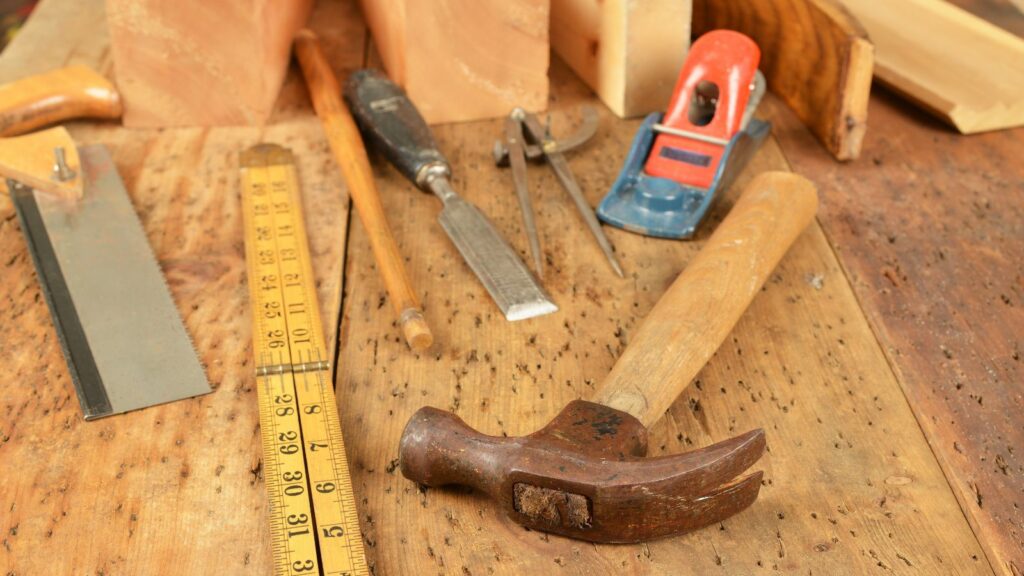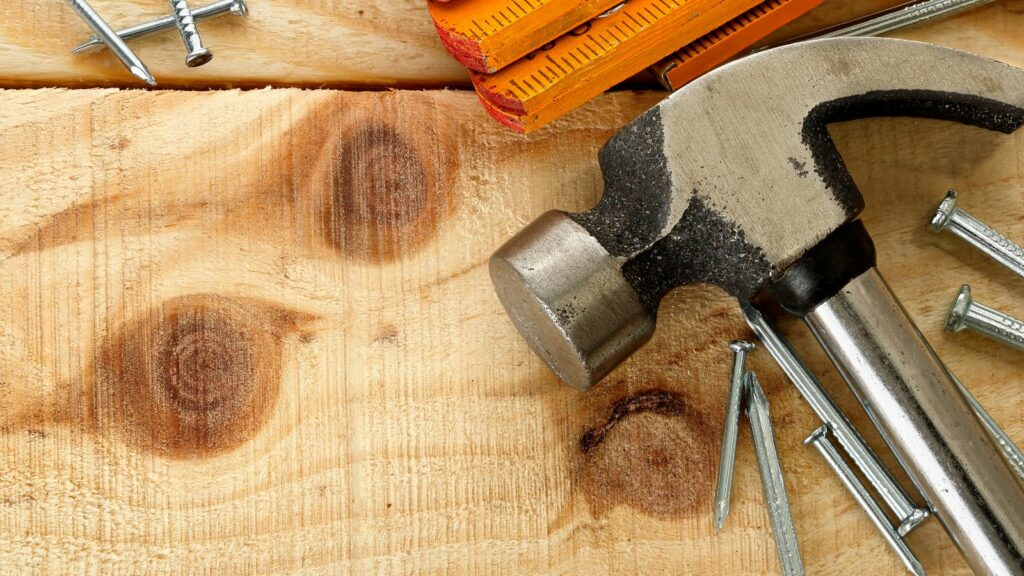Woodworking can be an incredibly rewarding hobby. Whether you’re a seasoned professional or a novice just starting your journey, there’s always room for improvement.
DIY Woodworking Tips

Practicing DIY woodworking tips involves knowing more than just how to work with wood. It’s about understanding wood grains, calculating precise measurements, and mastering the use of key woodworking tools. Beginners might find it beneficial to familiarize themselves with fundamental woodworking terms such as “dovetail”, “miter”, and “joints”. Moreover, it’s crucial to be aware of the basic safety rules, such as wearing safety glasses and using equipment properly, to ensure a secure work environment.
Embarking on any DIY woodworking tips project mandates a well-prepared toolbox. Some key elements include a reliable tape measure, a versatile square, and a sturdy saw. For fine detailing work, chisels prove to be invaluable. Additionally, sandpaper and various clamps cater to the need for smooth finishes and holding pieces together during the glue-up. Importantly, investing in quality equipment can make a significant difference in the execution of the project.
Advanced Woodworking Techniques
How to Use Hand Tools Effectively
- Ensure Sharpness: Maintaining hand tools like chisels and planers in a sharp state increases precision. Sharp blades slice through wood grains smoothly, limiting tear-out.
- Proper Grip: Holding hand tools correctly enhances control. For instance, when using a chisel, holding it at a 30-degree angle maximizes detailing capability and helps regulate pressure levels.
- Experienced Guidance: Following expert tutorials, such as those by Paul Sellers or Tom Fidgen, assists in refining hand tool skills. Their expertise offers valuable insights into techniques that enhance accuracy and efficiency.
Understanding Joinery and Woodworking Joints
Joinery, the method of binding pieces of wood together, is crucial to woodworking. Key knowledge of various joints is fundamental:

- Mortise-and-Tenon: This joint connects two pieces at a 90-degree angle using a hole (mortise) and a tongue-like projection (tenon). Reliable sources, such as Popular Woodworking Magazine, rate it as one of the strongest woodworking joints.
- Dovetail: Recognized by its trapezoid-shaped tails and pins, this joint holds pieces at a right angle and is often found in drawer constructions.
- Lap Joint: Here, material is removed from each piece, allowing them to overlap. Power Tools Central defines it as versatile and extremely strong, suitable for frames and panel doors.
- Pocket-Screw Joinery: An optimal choice for beginners, it utilizes screws fitted into angled holes. This technique, according to Wood Magazine, makes quick, strong assemblies possible.
Shopping Guide for Woodworking Equipments
Where and How to Buy Quality Tools

Shopping for woodworking tools requires several considerations. Buyers must evaluate the quality, brand reputation, pricing, and aptness for intended projects. They’ll find a wide range of tool options available online, with platforms like Amazon, eBay, and Home Depot offering selections of reputable brands such as Black & Decker, Dewalt, and Bosch.
Before purchasing, customers need to perform some groundwork:
- Research: Dig into customer feedback on the considered tool brands. Ensure they hold an esteemed reputation for reliability and durability.
- Compare Prices: Tools can vary greatly in cost. Create a budget and compare the cost of different brands. Keep an eye out for sales and discounts to make cost-effective purchases.
- Inspect Tool Specifications: Examine tool attributes like power rating (for power tools), size, and weight. This information is pivotal in gauging if a tool suits a particular project.
Essential Safety Gears for Woodworking
Safety always comes first when woodworking, thus investing in top-quality safety gear is non-negotiable. Here’s a list of must-have safety equipment for woodworkers:
- Safety Glasses: Shield eyes from dust and debris.
- Ear Protection: Minimize exposure to high-decibel noise produced by power tools.
- Dust Mask or Respirator: Protect lungs from dust particles.
- Work Gloves: Safeguard hands from splinters and sharp edges.
- Safety Boots: Protect feet from falling tools and facilitate a firm grip on slippery surfaces.
Enhance Woodworking
The journey into DIY woodworking tips is a rewarding one, filled with opportunities for creativity and skill development. Equipping oneself with the right tools and understanding essential techniques can significantly enhance the woodworking experience. Beginners should not shy away from learning the basics, including familiarizing themselves with woodworking terms and adhering to safety rules.

